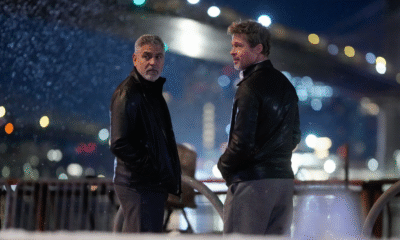News
Antarctica Rescue Mission: How a 20-Hour Flight Saved 3 U.S. Researchers From the Edge of the World
In one of the most extreme and unforgiving environments on the planet, the Royal New Zealand Air Force (RNZAF) pulled off a heroic 20-hour evacuation mission to rescue three American researchers from Antarctica’s McMurdo Station.
Faced with life-threatening weather conditions, the absence of a traditional runway, and pitch-black skies, the RNZAF deployed a C-130J Hercules aircraft on Tuesday to conduct the Antarctica rescue mission, extracting the scientists, one of whom required urgent medical attention. The remaining two were transported as a precaution due to limited medical resources on-site.
“This was one of the most complex and high-risk missions we ever undertake,” said Air Commodore Andy Scott, the RNZAF’s Air Component Commander. “Once the aircraft heads far enough south, there’s no turning back—there are no other airfields available to divert to.”
No Runway, No Daylight, No Margin for Error
Landing a 160,000-pound aircraft on sheer ice without a formal runway is no small feat. The U.S. Antarctic Program’s Winter Team first had to groom the ice to create a makeshift landing strip, a task made even more difficult by sub-zero temperatures, reaching as low as -11°F.
Adding to the challenge, the crew navigated and landed using Night Vision Goggles due to the complete darkness that blankets Antarctica during winter. “The weather in this region changes rapidly and unpredictably,” said Scott, emphasizing the razor-thin window available for a safe flight.
Hot Refueling on Ice
Once the Hercules touched down near McMurdo, it didn’t stop running. Engines were kept alive throughout a rapid refueling process known as “hot refueling” to prevent freezing. The three patients were quickly boarded, and the aircraft took off without delay for Christchurch, New Zealand.
Onboard was a medical officer to provide in-flight care during the return. The full round-trip rescue lasted approximately 19.5 hours.
A Global Effort With High Stakes
The mission was launched at the request of the U.S. National Science Foundation (NSF), which oversees operations at Antarctica’s McMurdo Station. The names and conditions of the patients have not been disclosed, but all are now receiving treatment in New Zealand.
Melissa Sweeney, U.S. Chargé d’Affaires to New Zealand, praised the rescue as “flawless.”
“Our Kiwi partners didn’t hesitate to undertake this mission in one of the most unforgiving environments on Earth. Their skill and readiness are truly world-class,” she said.

































